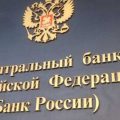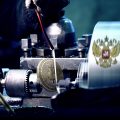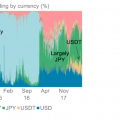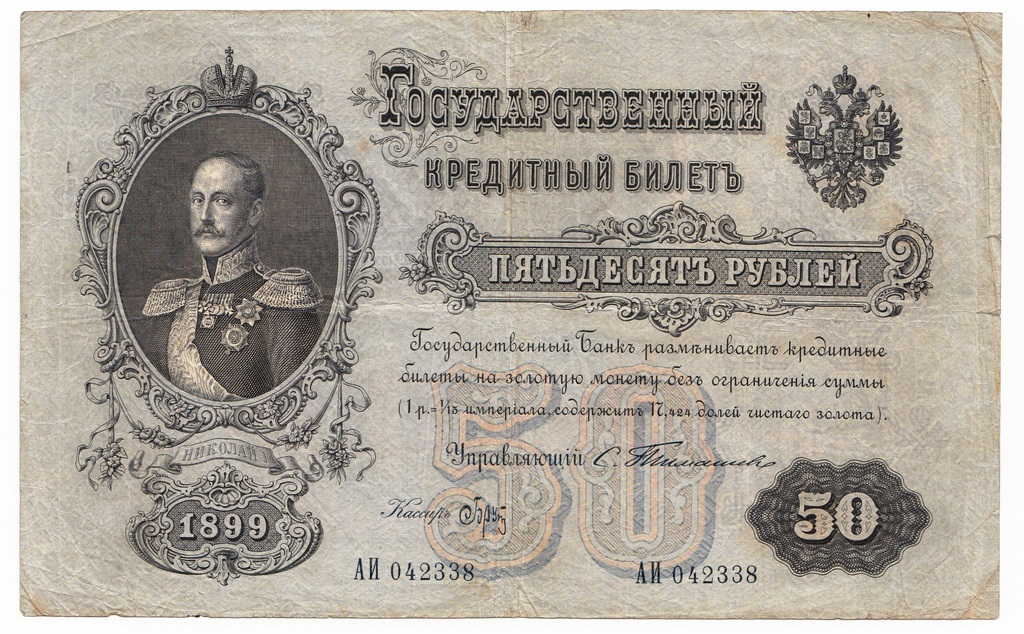
We have already talked in our materials about the unenviable history of fiat money — pieces of paper, the cost of whichsupported by the force of law (from Latin «fiat» —decree) Now, I would like to dwell on the recent history of one of them. Let's trace the fate of our national currency, the Russian ruble, over the past century.</strong>
The Russian ruble met the beginning of the 20th century in a veryin good shape. After Witte's monetary reform of 1895-1897, which established a consistent gold standard, and until the very beginning of the First World War, the paper ruble was freely exchanged for gold at the rate of 0.774234 grams per ruble. It is this period of history that can rightfully be called the golden age of the heyday of the Russian economy — the state did not interfere with private initiative, legislation was modernized, industry developed rapidly, the structure of production became more complex, GDP grew at an unimaginable pace, real capital was accumulated, which became the driver of development, construction of infrastructure, railways throughout the Russian Empire.
The vast general market of the Empire by 1913 included170 million people (for comparison, the population of all of Europe then did not exceed 300 million people) and was, without exaggeration, the largest in the world. Many at that time were convinced that it was Russia, and not just America, that would become the locomotive of economic development and technological progress in the 20th century.
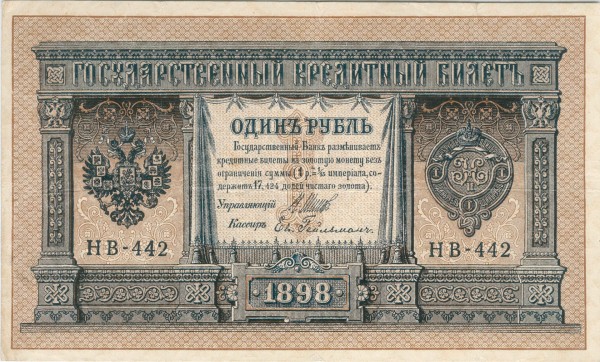
However, everything changed in 1914 — Withthe beginning of the catastrophic First World War for Russia. Soon after the start of the war, the free exchange of paper rubles for gold was stopped. Gold coins (Nikolaev chervonets) immediately disappeared from circulation, and ever-increasing military expenses began to be financed by the government (as in other warring countries) through unsecured money issues. As a result, the volume of paper money began to increase rapidly. If at the beginning of 1914 there were 2.4 billion rubles in circulation, then in 1916 there were already 8 billion rubles in circulation throughout the country. Coupled with a drop in the production of civilian goods, this caused serious inflation and problems in the economy.
Population dissatisfaction with the hardships of war andeconomic problems were cleverly exploited by all kinds of revolutionaries, the main backbone of which were socialists of all stripes (including the Bolsheviks). After the change of the «rotten regime» they promised heaven on earth, abundance and unimaginable happiness for everyone with the help of a simple recipe — socialist redistribution. It is enough just to “expropriate the expropriators,” as Marx taught, and everything else will somehow form itself.
However, the reality was far fromso rosy. After the February Revolution and the fall of the Empire, the only economic recipe for the new government was the accelerated printing of money, after which the number of zeros on banknotes began to grow rapidly.
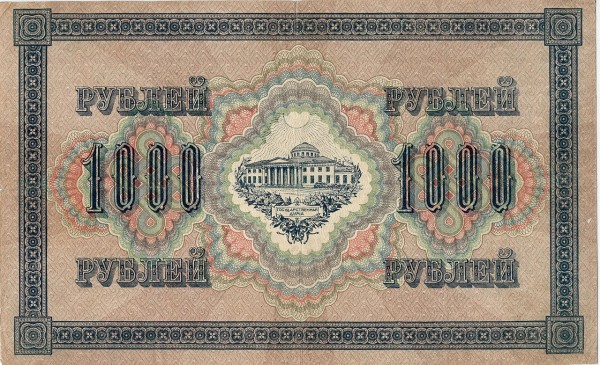
«Kerenka» 1000 rub. The largest banknote of 1917.
The proletarian revolution that soon became victoriouscompletely adopted the practice of the Provisional Government, continuing to actively pump up the money supply. Since 1919, along with the introduction of a total and all-encompassing “prodrazverstka”, the Soviet government began printing the so-called “sovznaki”.
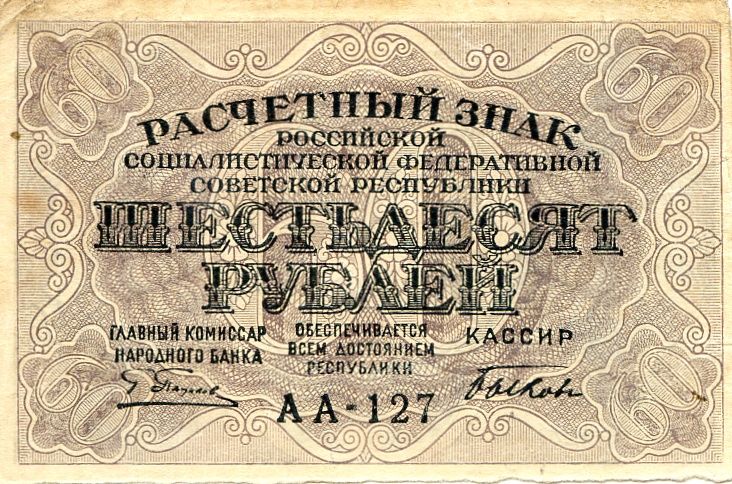
The speed of printing Sovznak was such that they had to be denominated twice — 10 thousand times in 1922 and 100 times in 1923.
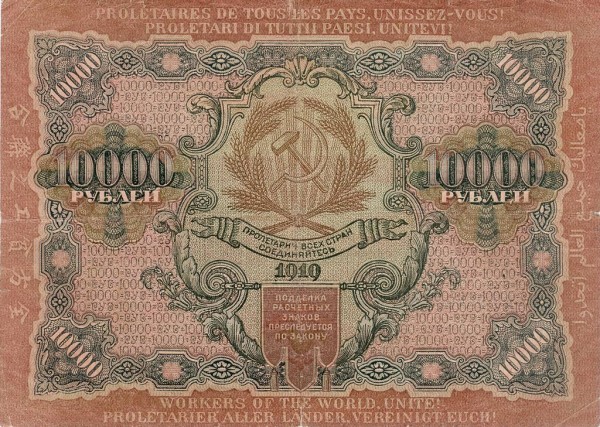
At the end of the era of «war communism»,the country was in ruins, the economy was completely degraded, and any trust in Soviet banknotes was undermined. Willy-nilly, the Bolsheviks were forced to launch a new economic policy (NEP), part of which was the introduction of a parallel currency backed by gold.
To emphasize that the new monetary unit is much better than the previous sovznak, they even came up with a special name for it, “Soviet gold chervonets.”
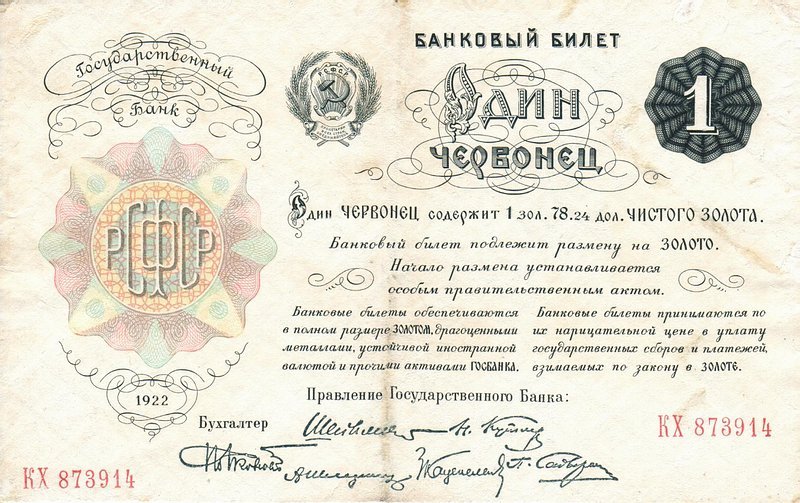
The exchange was made at the rate of 50,000 old«consigns» for 1 gold ruble. Only by 1924 was it possible to more or less extinguish inflation. The total accumulated denomination of the ruble at this time amounted to 50 billion (that is, over 10 years the ruble depreciated 50 billion times).
The main Soviet propagandist Mayakovsky wrote about this:
Equal silver and a new paper ticket,
Nowadays there is no difference between them.
Take whichever one tastes better -
Now paperwork is at a fixed rate.
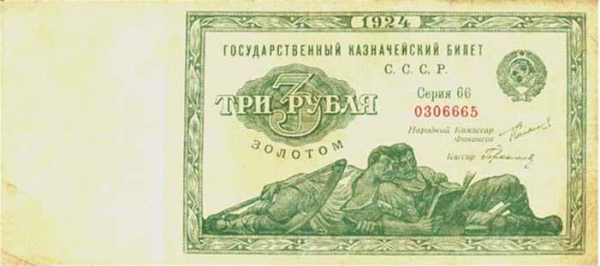
The NEP returned private initiative to the economy andhard money, and these two factors quickly restored the country's economy, which by 1928 had grown to almost pre-war levels. But the Bolsheviks always perceived the NEP as a temporary retreat from the diabolical power of free markets. Therefore, having become stronger, the Soviet nomenklatura quickly curtailed the NEP and began a total purge of the private sector and the nationalization of the entire economy.
As a result, the Soviet ruble quickly lostconvertibility, and by 1932 it had ceased to actually be exchanged for gold and quoted abroad. It was this period that Bulgakov described in the famous episode “Hand over your currency, citizens!” On Soviet treasury notes of 1938, there is no longer any mention of gold content; instead, “the ticket is secured by the entire property of the USSR.” This wording will remain on all subsequent issues of Soviet banknotes.
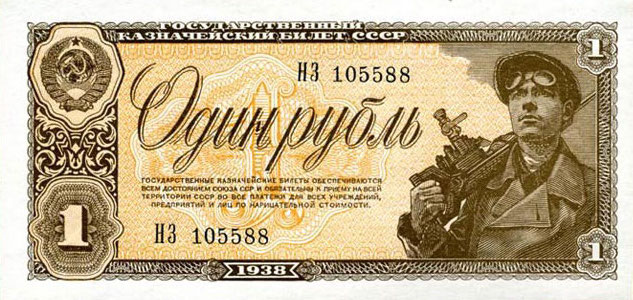
In 1947, a confiscation was carried outmonetary reform. It abolished all types of previously circulated Soviet banknotes and seriously pinched the savings of the population. All deposits of Soviet citizens over 3 thousand rubles were cut by a third, over 10 thousand — by two-thirds, and cash rubles — and in fact, they exchanged one for ten, that is, they reduced it ten times. Interestingly, those close to the authorities could avoid confiscation — for example, Beria himself ordered his assistant to scatter 40 thousand rubles among various savings banks. We found out about this only because «Beria, Beria lost his trust».
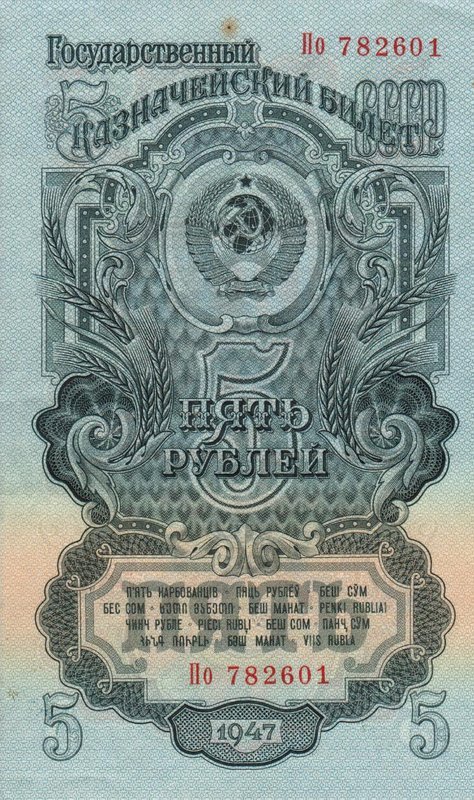
Monetary Reform of 1961, carried out since January 1, 1961,carried out in the form of denomination with devaluation. Banknotes of the 1947 model were exchanged for new banknotes of a smaller format in a ratio of 10 to 1. Banknotes of the 1961 model were printed over the next 30 years, and were remembered by the entire late Soviet generation as classic Soviet money «with Lenin» ;.
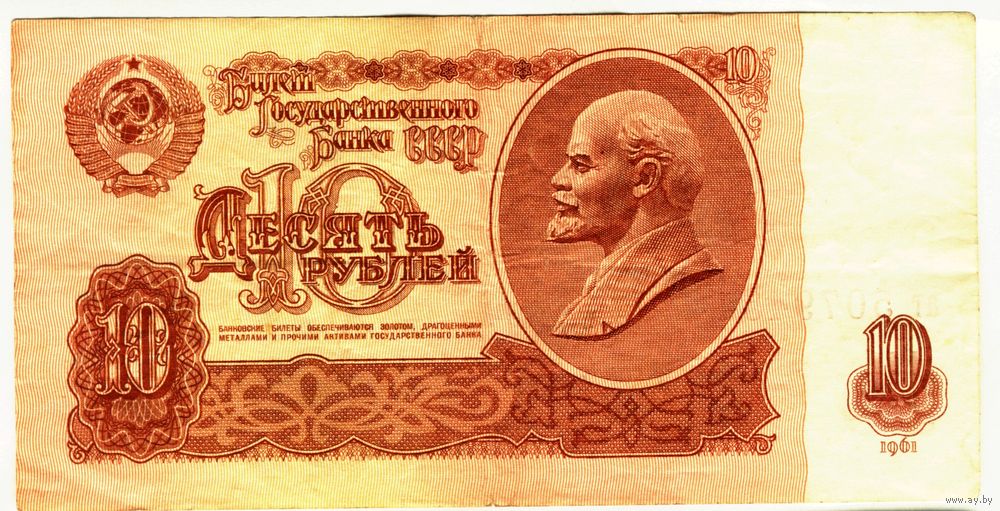
The last Soviet monetary reform was«Pavlovskaya», in 1991. The reform pursued the goal of getting rid of the excess money supply in cash circulation and at least partially solving the problem of shortages on the commodity market of the USSR. Therefore, it is not surprising that the reform was confiscatory. All 50 and 100 ruble bills were replaced, the population was given only three days to exchange and the limit was only 1000 rubles. All other large denomination bills were “burnt.”
The decree was reported at 21 o’clock on television, so the most resourceful managed to spend or exchange their bills on the same day, until knowledge of the reform was spread among the population.
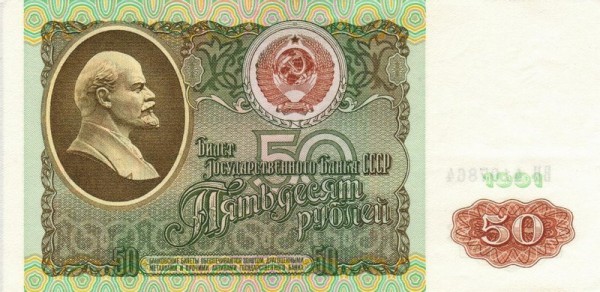
Since 1992, for the cause of printing rublesThe Russian government is already taking over. The beginning of the independent existence of the new Russian ruble did not go well. The Soviet planned economy collapsed, integration with the former Soviet republics was falling apart, directors of former state-owned enterprises unfamiliar with the market were suddenly told to «survive as best you can!» were in complete prostration.
there was no budget filling, and the RussianThe government has once again resorted to a proven recipe — printing press. Already in the first years of independent Russia, so much money was printed that the post-Soviet inflationary price adjustment quickly turned into hyperinflation.
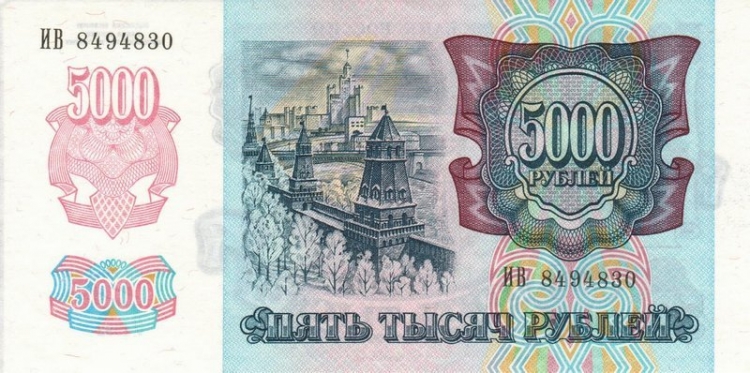
In 1993, another confiscation took placereform. Old banknotes were exchanged for new ones with a limit of 35 thousand rubles (about 35 dollars), raised to 100 thousand a few days later. It was about this reform that Chernomyrdin uttered his now catchphrase: «We wanted the best, but it turned out as always".
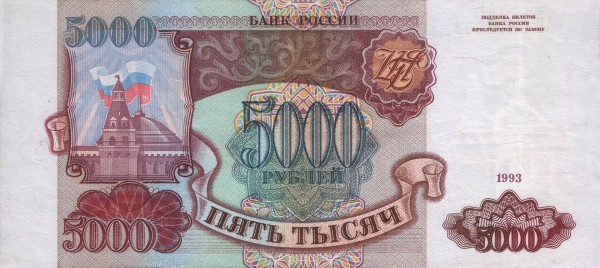
Only by 1997, when almost all Russiansmanaged to become ruble millionaires (which, however, did not bring joy to anyone, since there was little that could be bought for a million), hyperinflation was finally stopped.
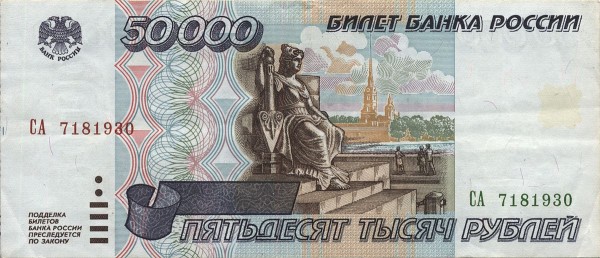
Soon, a denomination of 1000 to 1 was carried out, which led the Russian ruble to the model that we know and is dear to this day.
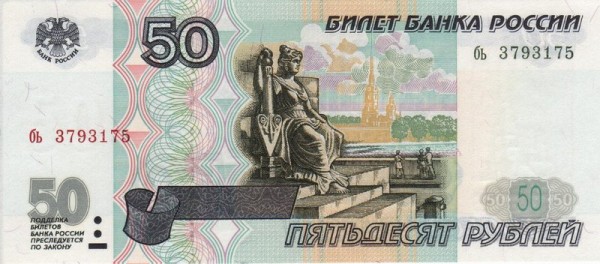
***
So, let's summarize the history of the ruble in the twentieth century. In total, during this century the ruble was denominated four times,a total of 500 trillion timesand there were threeconfiscation reform(four if you count the reform of 1921, when sovznak were exchanged, but not previously issued Russian rubles).
Therefore, perhaps we should not be surprised thatFor generations, the overwhelming majority of our citizens have developed a deep distrust of the ruble as a means of preserving purchasing power. You should also not be offended when the ruble is sometimes contemptuously called “wooden.” — after all, in the 20th century, it became one of the first completely fiat currencies (after the Bolsheviks quietly stopped exchanging for gold in the early 30s), and therefore fully experienced all the troubles inevitable for this type of inferior money.
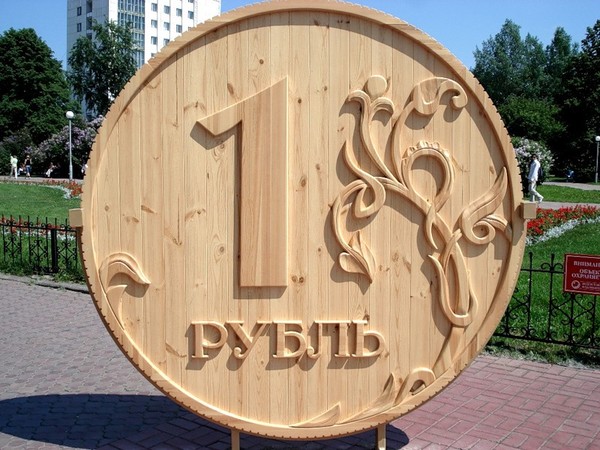
After the denomination of 1997 and the devaluation of 1998,The ruble, until very recently, enjoyed a period of relative calm, without sharp shocks and monetary reforms. However, it seems that this period of calm has come to an end.What do you think the ruble will face in the future?
Based on materials: Wikipedia, RussianMoney, Livejournal
to new videos of our channel!


